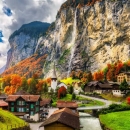
10 Of The Best European Capital Cities By Rail
There is something special about Europe’s capital cities. Each has a shared stately presence, mixed with unique cultures, history, customs, traditions, and style. The strong sense of identity, along with the status and responsibility that comes with being a capital city, makes them fascinating places to visit. And, of course, they are usually the easiest places to reach by train. Here are 10 European capital cities to visit by train.
1. Amsterdam, Netherlands
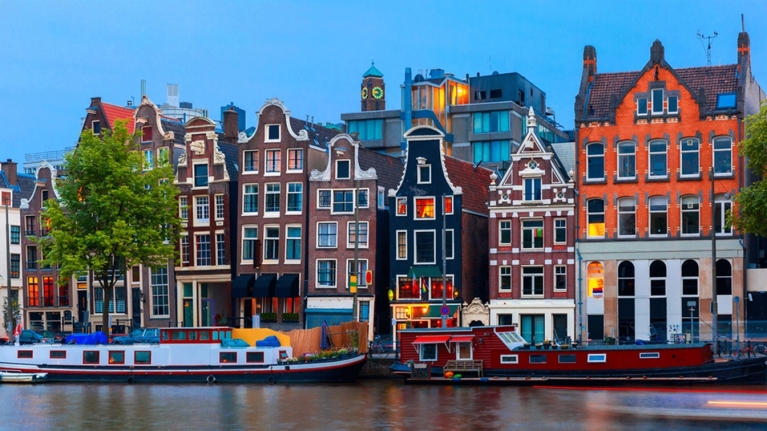
Amsterdam’s famous canal system, quaint architecture, esteemed museums, surplus of cyclists, and infectiously hedonistic lifestyle make this one of the most popular European capital cities to visit. Its location and great rail connections also make it a perfect starting point for a train journey.
Don’t miss: A walk or cycle around the canals, either on your own or as part of an organized tour. Go visit Vondelpark, Dam Square, and the neighbourhood called Jordaan.
Getting to Amsterdam by train: There are regular trains to Amsterdam from throughout the Netherlands. There are also high-speed and overnight connections.
2. Athens, Greece

Walking through Athens is like walking through thousands of years of history. Ancient monuments dripping with history stand alongside everyday buildings, often before a chaotic backdrop. Though the city is overwhelming, it is cleaning up its act. Many view a visit to the Greek capital as a historical pilgrimage.
Don’t miss: The Acropolis, which touristic as it is, remains one of the world’s most iconic symbols.
Getting to Athens by train: There are regular trains to Athens through the Balkans. The main route travels through Macedonia. You can also reach Greece by ferry, with regular crossings from Italy.
3. Berlin, Germany
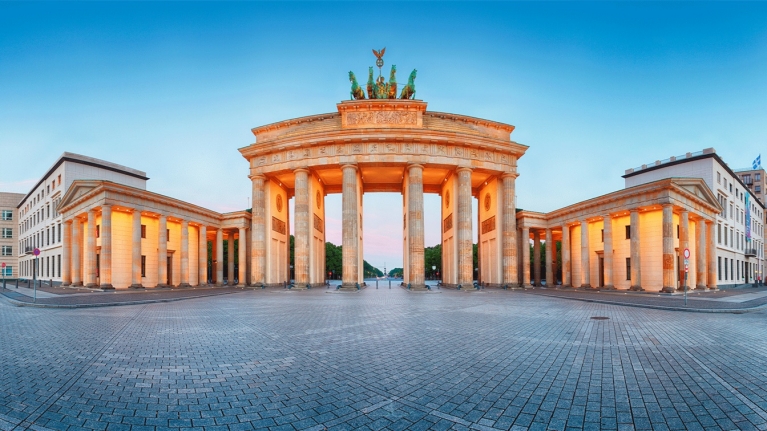
The German capital has become one of the continent’s most iconic cities. A somber history has given way to one of Europe’s foremost creative hubs. Parties run through the weekend and through to Monday lunchtime, cafés overflow with freelancers and buzz with start-up meetings, and the streets pulsate with an energy and historical legacy that is hard not to love.
Don’t miss: A free historical walking tour in Berlin. You will get an overview of key locations without having to take out a guidebook. Three necessary stops are the Museum island, the rebuilt Reichstag, the Brandenburg Gate, and the Berlin Cathedral.
Getting to Berlin by train: Most trains in Germany seem to lead to Berlin. There are also regular connections and overnight trains from dozens of international destinations, and from as far away as Paris.
4. Budapest, Hungary
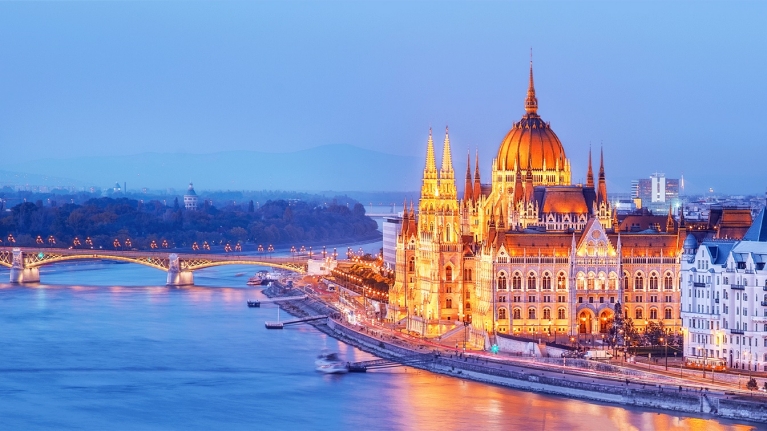
Budapest still feels like a sleeping giant waiting to be discovered as Europe’s next big city. Stunning architecture, vibrant nightlife, a young and creative food and coffee scene, and an intriguing east-meets-west history, all set along the sparkling Danube, make this a truly spectacular destination to visit.
Don’t miss: A walk along the Danube, past the Hungarian Parliament buildings. Pay attention to St. Stephen’s Basilica, Fisherman’s Bastion, and Gellert Hill.
Getting to Budapest by train: Budapest is a convenient train ride from several European cities, including Prague, Vienna, Zagreb, and Bratislava. There are also overnight trains from several long-haul destinations.
5. Copenhagen, Denmark
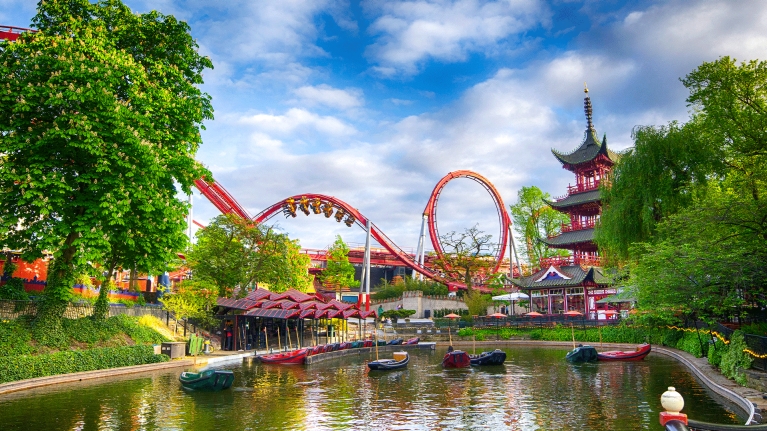
The Danish capital occupies an interesting position on the coastal islands of Amager and Zealand. It is packed full of fascinating history and beautiful Renaissance-era castles and buildings. But there is also a modern edge to Copenhagen, which makes it one of the most progressive and exciting European capital cities to visit.
Don’t miss: Tivoli Gardens amusement park. It is a beautiful attraction to visit, even if you are not a fan of the hair-raising rides. Go check Nyhavn Harbor and the statue of the Little Mermaid.
Getting to Copenhagen by train: There are regular trains to Copenhagen, including daily routes from Germany operated by Deutsche Bahn. There are also hourly trains from Stockholm.
6. Lisbon, Portugal
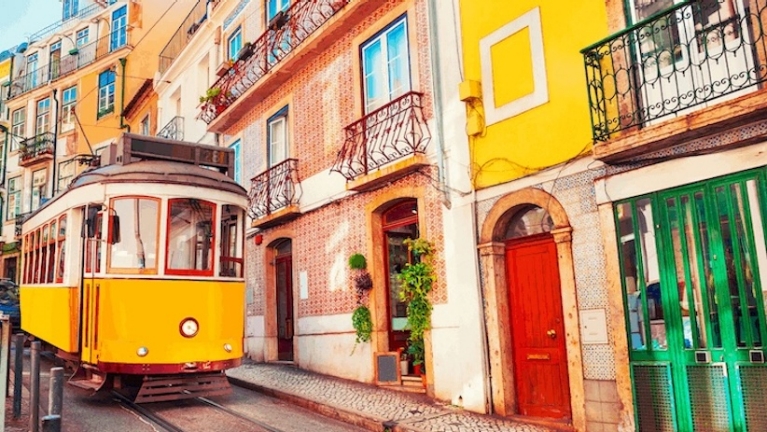
Lisbon has earned a reputation as one of Europe’s party capitals. Although this may be true, there is a lot more to this city than all-night revelry. History, architecture, food, culture, and stunning views combine to make this a truly memorable destination to visit on a rail journey through Europe.
Don’t miss: A walk through the Alfama district, either alone or as part of a tour. It will expose you to another fascinating aspect of this vibrant city.
Getting to Lisbon by train: Lisbon is the focal point of the Portuguese rail network. If you are reaching the country from Spain, consider starting in the north and working your way down for the easiest connections.
7. Ljubljana, Slovenia
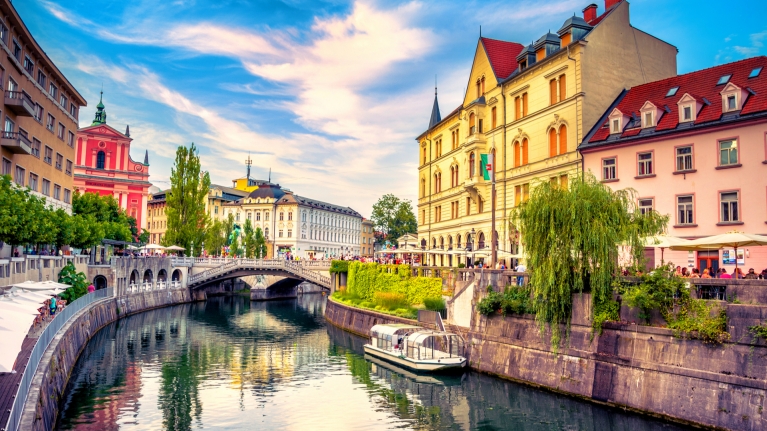
What the small Slovenian capital lacks in size, it more than makes up for in charm. The beautiful pedestrianized inner city, set along the Ljubljanica River, buzzes day and night. There are vibrant bars, cafés, and restaurants. The imposing castle on the hill above sets a medieval theme that follows you through the quaint streets of this absorbing European capital.
Don’t miss: A night out in the Metelkova district ― it will reveal a totally different side of this progressive city. Do not forget to check the Castelo de São Jorg.
Getting to Ljubljana by train: There are easy train connections to all of Slovenia’s neighbours, including Austria, Italy, Hungary, and Croatia. Most regional train lines also connect through the capital.
8. Madrid, Spain

The Spanish capital appears to be in a constant battle with Barcelona for the title of Spain’s coolest city. But Madrid still has the advantage when it comes to stately capital city presence. Pristine parks, impressive museums, classic architecture, and a burgeoning creative scene make this one of Europe’s more established and intriguing destinations.
Don’t miss: The Picasso mural Guernica. It hangs in the national museum, Museo Nacional Centro de Arte Reina Sofía. Pay a visit to Prado Museum and Buen Retiro Park as well as Crystal Palace.
Getting to Madrid by train: Madrid is the epicentre of rail travel in Spain. It also offers regular long-distance connections to neighbours Portugal and France.
9. Paris, France
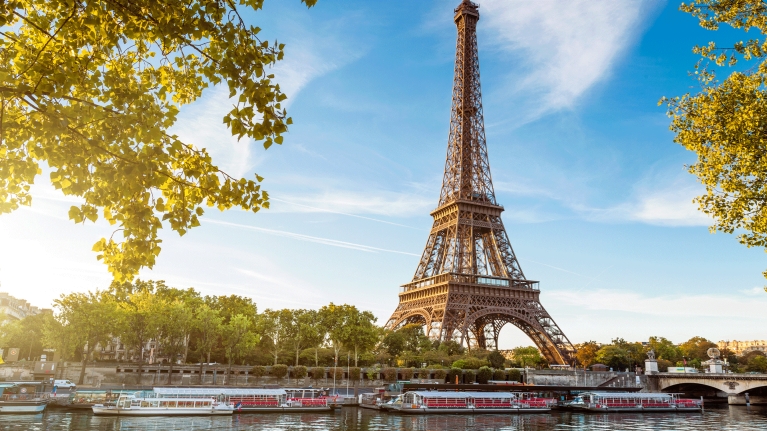
Paris hardly needs an introduction. Europe’s most famous capital has an uncanny ability to stay both relevant and iconic. Whether you choose to tick off all the famous attractions, or spend the day soaking up the culture at a small Parisian brasserie, you will most likely be plotting your return before you have even departed.
Don’t miss: Going full tourist and getting at least one aerial perspective of the city, either from the Arc de Triomphe or Eiffel Tower.
Getting to Madrid by train: There are regular trains to Paris from throughout France, arriving at one of eight stations. There are also several long-distance and overnight trains to major European cities.
10. Rome, Italy
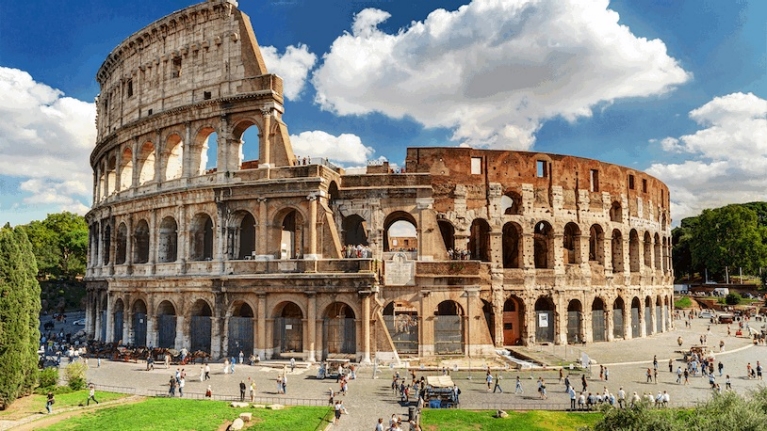
You are probably already familiar with the Italian capital’s historical significance. But there is nothing that can beat a walk through the often chaotic yet always fascinating streets of Rome. History is hiding around every corner, and a visit to the city has the ability to bring it all to life like few others can.
Don’t miss: The Roman Forum, which is the epicentre of the historical action. A walk through this neighbourhood is an enriching experience. Stop by the Colosseum, you will not regret it!
Getting to Rome by train: Rome is a major rail hub in Italy, with regular trains from both the north and south. There are also long distance connections to most neighbouring countries.
Although it is true that there is more to Europe than its capitals, there is something profoundly rewarding about visiting these symbolic destinations. The ease of access to these European capital cities by rail also makes them a perfect addition to any Interrail trip across the continent.
You might like this as well:
-
![empty-parliament-hall]() 7 Beautiful Parliamentary Buildings In Europe Explore Europe by train with Interrail, and don't miss these impressive parliamentary buildings on your travels.
7 Beautiful Parliamentary Buildings In Europe Explore Europe by train with Interrail, and don't miss these impressive parliamentary buildings on your travels. -
![haunted-house-europe]() 8 Haunted Places In Europe That Will Freak You Out Want to explore the dark side of Europe? Here are 8 creepy places to visit by train with Interrail, from haunted castles to abandoned mental hospitals & murder scenes.
8 Haunted Places In Europe That Will Freak You Out Want to explore the dark side of Europe? Here are 8 creepy places to visit by train with Interrail, from haunted castles to abandoned mental hospitals & murder scenes.
Change of currency
You cannot change the currency once you have a Pass in your cart. Remove the Pass, and then change the currency on the website header.

